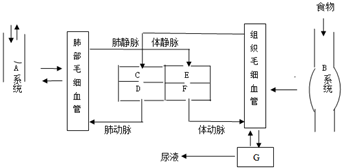某同学做测定玻璃折射率实验时,用他测得的多组入射角θ1与折射角θ2作出sinθ1-sinθ2图象,如图所示,下列判断中正确的是( )
A.他做实验时,研究的是光线从空气射入玻璃的折射现象
B.玻璃的折射率为0.67
C.玻璃的折射率为1.5
D.玻璃临界角的正弦值为0.67

A、由图象可知:sinθ1>sinθ2,则入射角θ1>折射角θ2,所以光线从空气射入玻璃,故A正确.
B、C、图象的斜率k即是玻璃折射率,由图易得:k=n=
=1.5,故B错误,C正确;1 0.67
D、玻璃临界角的正弦值sinC=
=0.67,故D正确.1 n
故选:ACD

